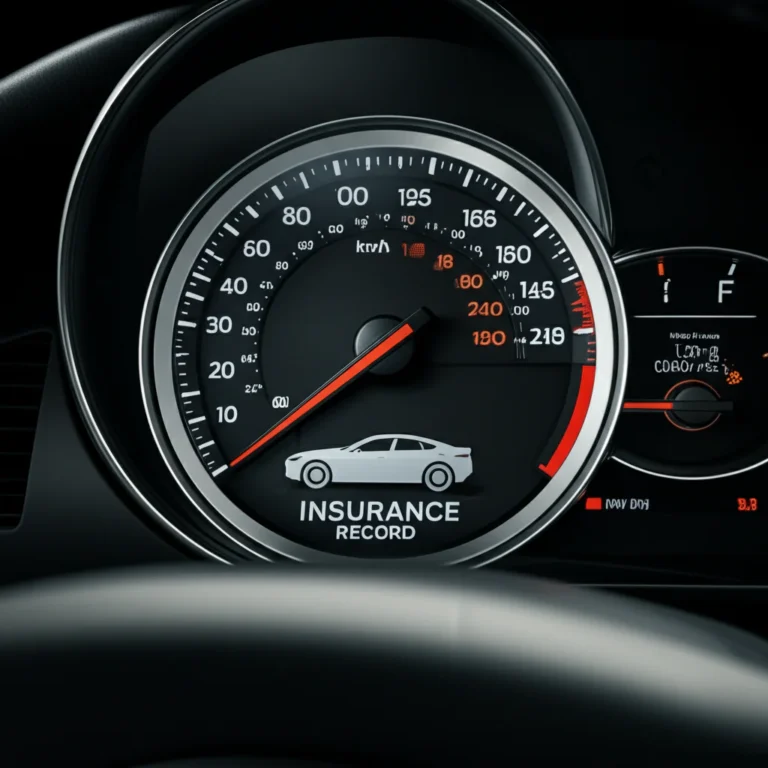Support our educational content for free when you purchase through links on our site. Learn more
Is Car Insurance Mandatory in Every State? The 2025 Truth Revealed! 🚗
Did you know that while car insurance is legally required in almost every state, there’s one surprising holdout where it’s not mandatory? If you’ve ever wondered, “Is car insurance really mandatory in every state?” — you’re not alone. Navigating the patchwork of state laws can feel like decoding a secret map, with each state setting its own rules, minimum coverage levels, and penalties for driving uninsured.
In this article, we’ll take you on a deep dive through the U.S. car insurance landscape for 2025. From the lone state that lets you drive without insurance (with strings attached) to the states with the highest minimum coverage requirements, we’ve got the full scoop. Plus, we’ll explore what happens if you skip insurance, the pros and cons of minimum versus full coverage, and even how some states allow alternatives like bonds or self-insurance. Ready to become a car insurance law expert? Buckle up!
Key Takeaways
- Car insurance is mandatory in 49 states, with New Hampshire as the notable exception allowing uninsured driving under strict financial responsibility rules.
- Minimum coverage requirements vary widely by state, including liability, personal injury protection, and uninsured motorist coverage.
- Driving without insurance can lead to hefty fines, license suspension, and financial liability for damages and injuries.
- Some states allow alternatives to traditional insurance, such as bonds or self-insurance, but these options are rare and come with strict conditions.
- Choosing between minimum and full coverage depends on your risk tolerance and budget, but full coverage offers greater peace of mind.
Curious about which states have the toughest insurance laws or how to legally drive without insurance? Keep reading — the answers might surprise you!
Table of Contents
- ⚡️ Quick Tips and Facts About Car Insurance Requirements
- 🚗 The Evolution of Car Insurance Laws Across the States
- 1. Which States Mandate Car Insurance and Which Don’t?
- 2. Minimum Auto Insurance Coverage Requirements by State
- 3. Understanding Proof of Financial Responsibility Laws
- 4. States That Accept Bonds or Alternatives Instead of Traditional Insurance
- 5. What Happens If You Drive Without Insurance and Get Into an Accident?
- 6. Types of Auto Insurance Coverage You Should Know
- 7. Should You Opt for Minimum Coverage or Full Coverage? Pros and Cons
- 8. Additional State-Specific Car Insurance Laws and Regulations
- 9. How to Legally Drive Without Insurance: Is It Possible?
- 🔍 Recap: Key Takeaways on Mandatory Car Insurance Across the U.S.
- 📚 Recommended Resources and Links for Car Insurance Info
- ❓ Frequently Asked Questions About Car Insurance Mandates
- 📑 Reference Links and Credible Sources
- 🎯 Conclusion: Navigating Car Insurance Laws Like a Pro
Quick Tips and Facts About Car Insurance Requirements
To get started with understanding car insurance requirements, it’s essential to visit our car insurance page for a comprehensive overview. Car insurance is a crucial aspect of driving in the United States, with nearly all states mandating some level of coverage. According to the National Association of Insurance Commissioners, 49 out of 50 states require drivers to carry some level of auto insurance. But what does this mean for you, and how do you navigate the complex world of car insurance?
Key Facts to Know
- New Hampshire is the sole exception: As of July 1, 2024, New Hampshire is the only state where driving uninsured is legal for some drivers, but with specific financial responsibility requirements.
- Minimum coverage varies by state: Each state has its own minimum requirements for car insurance, including liability, personal injury protection, and uninsured/underinsured motorist coverage.
- Consequences of driving uninsured: Driving without insurance can lead to severe penalties, including fines, license suspension, and financial responsibility for damages and injuries.
The Evolution of Car Insurance Laws Across the States
The history of car insurance laws in the United States is fascinating, with roots dating back to the early 20th century. To learn more about the evolution of car insurance, visit our Car Brand Histories page. Over time, states have adapted their laws to reflect changing circumstances, such as the introduction of no-fault insurance and the rise of uninsured motorist coverage. For example, Florida is the only state that does not require bodily injury liability, instead mandating property damage liability and personal injury protection.
Impact on Drivers
- Increased protection: Car insurance laws have led to increased protection for drivers and their passengers, with many states requiring minimum levels of coverage.
- Variation in requirements: However, the variation in requirements between states can be confusing for drivers, especially those who travel frequently.
Which States Mandate Car Insurance and Which Don’t?
As mentioned earlier, New Hampshire is the only state where car insurance is not mandatory, but drivers must still demonstrate financial responsibility. For more information on car insurance requirements by state, check out our Car Brand Comparisons page. In contrast, Virginia allows drivers to pay a fee in lieu of insurance, but this does not provide the same level of protection as traditional car insurance.
State-by-State Breakdown
| State | Minimum Coverage Requirements |
|---|---|
| Alabama | Bodily injury liability: $25,000 per person / $50,000 per accident, Property damage liability: $25,000 |
| California | Bodily injury liability: $15,000 per person / $30,000 per accident, Property damage liability: $5,000 |
| Florida | Property damage liability: $10,000, Personal injury protection: $10,000 |
Minimum Auto Insurance Coverage Requirements by State
Minimum auto insurance coverage requirements vary significantly from state to state. For example, Michigan requires Property Protection Insurance (PPI) with a minimum limit of $1 million, while California has a lower minimum requirement of $15,000 per person / $30,000 per accident for bodily injury liability. To compare car insurance rates and find the best coverage for your needs, visit our Car Brand Lists page.
Types of Coverage
- Liability coverage: Required in nearly all states, liability coverage pays for damages and injuries caused to others in an accident.
- Personal injury protection (PIP): Required in some states, PIP covers medical expenses for drivers and their passengers, regardless of fault.
- Uninsured/underinsured motorist coverage: Required in some states, this coverage pays for damages and injuries caused by drivers with little or no insurance.
Understanding Proof of Financial Responsibility Laws
Proof of financial responsibility laws require drivers to demonstrate their ability to pay for damages and injuries in the event of an accident. In New Hampshire, drivers who opt out of insurance must demonstrate financial responsibility totaling $100,000 per registered vehicle. For more information on financial responsibility laws, visit our Auto Industry News page.
Financial Responsibility Requirements
- New Hampshire: $25,000 bodily injury liability per person, $50,000 bodily injury liability per accident, $25,000 property damage liability
- Other states: Varying requirements, but most states require drivers to carry some level of liability insurance
States That Accept Bonds or Alternatives Instead of Traditional Insurance
Some states allow drivers to post a bond or use alternative forms of financial responsibility instead of traditional car insurance. For example, some states permit self-insurance for drivers with a large number of vehicles or substantial financial assets. To learn more about self-insurance options, visit our Car Brand Market Shares page.
Alternative Forms of Financial Responsibility
- Bonds: Some states allow drivers to post a bond to demonstrate financial responsibility.
- Self-insurance: Drivers with a large number of vehicles or substantial financial assets may be able to self-insure.
What Happens If You Drive Without Insurance and Get Into an Accident?
Driving without insurance can have severe consequences, including fines, license suspension, and financial responsibility for damages and injuries. According to the Insurance Information Institute, driving without insurance can lead to significant financial hardship, including wage garnishment and vehicle towing or impoundment.
Consequences of Driving Uninsured
- Fines and penalties: Driving without insurance can result in significant fines and penalties.
- License suspension: Drivers who are caught driving without insurance may face license suspension.
- Financial responsibility: Drivers who cause an accident while uninsured may be held financially responsible for damages and injuries.
Types of Auto Insurance Coverage You Should Know
There are several types of auto insurance coverage available, including liability, personal injury protection, and uninsured/underinsured motorist coverage. For more information on types of coverage, visit our Car Brand Comparisons page. Comprehensive and collision coverage are always optional, but can provide valuable protection for drivers.
Optional Coverage
- Comprehensive coverage: Pays for damage to your vehicle caused by events such as fire, theft, or vandalism.
- Collision coverage: Pays for damage to your vehicle caused by accidents, regardless of fault.
Should You Opt for Minimum Coverage or Full Coverage? Pros and Cons
When it comes to car insurance, drivers must decide whether to opt for minimum coverage or full coverage. Minimum coverage meets legal requirements but may not provide adequate protection, while full coverage provides more comprehensive protection but can be more expensive. To compare car insurance rates and find the best coverage for your needs, visit our Car Brand Lists page.
Pros and Cons of Minimum Coverage
- Pros: Meets legal requirements, can be less expensive
- Cons: May not provide adequate protection, can leave drivers financially vulnerable
Pros and Cons of Full Coverage
- Pros: Provides more comprehensive protection, can provide peace of mind
- Cons: Can be more expensive, may not be necessary for all drivers
Additional State-Specific Car Insurance Laws and Regulations
Car insurance laws and regulations vary from state to state, with some states having unique requirements or restrictions. For example, Michigan requires Property Protection Insurance (PPI) with a minimum limit of $1 million, while California has a lower minimum requirement of $15,000 per person / $30,000 per accident for bodily injury liability. To learn more about state-specific car insurance laws, visit our Car Brand Histories page.
State-Specific Laws and Regulations
- Michigan: Requires PPI with a minimum limit of $1 million
- California: Has a lower minimum requirement of $15,000 per person / $30,000 per accident for bodily injury liability
How to Legally Drive Without Insurance: Is It Possible?
While driving without insurance is not recommended, there are some circumstances in which it may be possible to drive without traditional car insurance. For example, some states allow drivers to post a bond or use alternative forms of financial responsibility. To learn more about alternative forms of financial responsibility, visit our Auto Industry News page.
Alternatives to Traditional Insurance
- Bonds: Some states allow drivers to post a bond to demonstrate financial responsibility.
- Self-insurance: Drivers with a large number of vehicles or substantial financial assets may be able to self-insure.
Recap: Key Takeaways on Mandatory Car Insurance Across the U.S.
In summary, car insurance is mandatory in nearly all states, with New Hampshire being the sole exception. Drivers must understand their state’s specific requirements and consider their individual needs when choosing car insurance coverage. For more information on car insurance requirements, visit our Car Brand Comparisons page.
Key Takeaways
- Car insurance is mandatory in nearly all states: Drivers must carry some level of car insurance to drive legally.
- State-specific requirements vary: Drivers must understand their state’s specific requirements and consider their individual needs.
Recommended Resources and Links for Car Insurance Info
For more information on car insurance, visit the following resources:
Frequently Asked Questions About Car Insurance Mandates
Q: Is car insurance mandatory in every state? A: No, New Hampshire is the sole exception. Q: What are the consequences of driving without insurance? A: Fines, license suspension, and financial responsibility for damages and injuries. Q: Can I drive without insurance if I post a bond or use alternative forms of financial responsibility? A: Yes, in some states.
Reference Links and Credible Sources
- National Association of Insurance Commissioners
- Insurance Information Institute
- Car Brands
- Policygenius
- Progressive
Conclusion: Navigating Car Insurance Laws Like a Pro 🚦

After cruising through the twists and turns of car insurance mandates across the U.S., here’s the bottom line: car insurance is mandatory in 49 states, with New Hampshire standing out as the lone exception — but even there, financial responsibility is non-negotiable. Whether you’re a daily commuter or a weekend road trip warrior, understanding your state’s minimum coverage requirements is your best defense against costly fines, legal headaches, and financial ruin after an accident.
We’ve unpacked the pros and cons of minimum vs. full coverage, the nuances of proof of financial responsibility, and the rare cases where bonds or self-insurance might replace traditional policies. While minimum coverage keeps you legal, it often leaves you exposed to significant risk. Full coverage might cost more upfront but offers peace of mind that’s worth every penny.
Remember the question we teased earlier: Is it really possible to drive legally without insurance? The answer is a cautious yes — but only in very limited cases, like New Hampshire’s financial responsibility option or states allowing bonds. For most drivers, skipping insurance is a gamble that rarely pays off.
So, buckle up, get the right coverage for your situation, and drive smart. Your wallet — and your peace of mind — will thank you.
Recommended Links for Shopping and Research 🛒
Looking to shop or compare insurance providers and car brands? Check these out:
- Progressive Car Insurance: Progressive Official Site
- GEICO Auto Insurance: GEICO Official Site
- State Farm Auto Insurance: State Farm Official Site
- Allstate Auto Insurance: Allstate Official Site
- Toyota Vehicles: Toyota Official Site
- Ford Vehicles: Ford Official Site
- Honda Vehicles: Honda Official Site
Frequently Asked Questions About Car Insurance Mandates ❓
Which states do not require car insurance?
New Hampshire is the only state where car insurance is not mandatory for all drivers. However, drivers must prove financial responsibility by demonstrating the ability to pay up to $100,000 per vehicle in damages if involved in an accident. Virginia previously allowed drivers to pay a fee instead of insurance but ended this option in 2024. In all other states, carrying at least minimum liability insurance is required by law.
What are the minimum car insurance requirements by state?
Minimum requirements vary widely but typically include:
- Bodily Injury Liability: Covers medical expenses for others injured in an accident you cause.
- Property Damage Liability: Covers damage to others’ property.
- Personal Injury Protection (PIP): Required in no-fault states, covers your medical expenses regardless of fault.
- Uninsured/Underinsured Motorist Coverage: Required in about half the states to protect you from drivers without adequate insurance.
For example, California requires $15,000 per person and $30,000 per accident for bodily injury liability, while Louisiana’s minimum is $15,000/$30,000 with lower property damage limits. Florida uniquely does not require bodily injury liability but mandates PIP and property damage coverage.
Can I drive without car insurance in some states?
In very limited cases, yes. New Hampshire allows drivers to forgo insurance if they can prove financial responsibility. Some states permit alternatives like posting a bond or self-insurance for large fleets. However, these exceptions are rare and come with strict conditions. For the vast majority of drivers, driving without insurance is illegal and risky.
What happens if I drive without car insurance?
Driving uninsured where insurance is mandatory can lead to:
- Fines and penalties: Often substantial and escalating with repeat offenses.
- License and registration suspension: Your driving privileges and vehicle registration may be revoked.
- Financial liability: You are personally responsible for all damages and injuries you cause, which can lead to lawsuits and wage garnishment.
- Vehicle impoundment: Your car may be towed or impounded.
- Higher future insurance premiums: When you do get insured, expect to pay more.
Are there alternatives to traditional car insurance?
Yes, but they are limited:
- Self-insurance: Usually available only to businesses or individuals with large fleets and significant assets.
- Posting a bond: Some states allow drivers to post a surety bond as proof of financial responsibility.
- Cash deposits: In rare cases, drivers can deposit funds with the state treasury as proof.
These alternatives require substantial financial resources and are not practical for most drivers.
How does car insurance vary between states?
Car insurance laws vary due to:
- At-fault vs. no-fault systems: No-fault states require PIP coverage and limit lawsuits, while at-fault states assign liability to the responsible driver.
- Minimum coverage amounts: States set different minimum liability limits.
- Additional coverage mandates: Some states require uninsured motorist coverage or medical payments coverage.
- Penalties for non-compliance: Enforcement and penalties differ widely.
Understanding your state’s laws is critical to staying compliant and protected.
Is liability insurance mandatory in all states?
Almost all states require liability insurance, which covers injuries and damages you cause to others. New Hampshire is the notable exception, where liability insurance is optional but financial responsibility must be demonstrated. Liability insurance is the backbone of car insurance laws because it protects other drivers and property owners from your potential negligence.
Reference Links and Credible Sources 📚
- National Association of Insurance Commissioners (NAIC): https://www.naic.org/
- Insurance Information Institute (III): https://www.iii.org/
- Progressive Insurance State Requirements: https://www.progressive.com/answers/state-car-insurance-information/
- Policygenius: Minimum Car Insurance Requirements by State (2024) – https://www.policygenius.com/auto-insurance/car-insurance-required-in-every-state/
- State Farm Auto Insurance: https://www.statefarm.com/insurance/auto
- GEICO Auto Insurance: https://www.geico.com/auto-insurance/
- Allstate Auto Insurance: https://www.allstate.com/auto-insurance.aspx
- Toyota Official Site: https://www.toyota.com/
- Ford Official Site: https://www.ford.com/
- Honda Official Site: https://www.honda.com/





